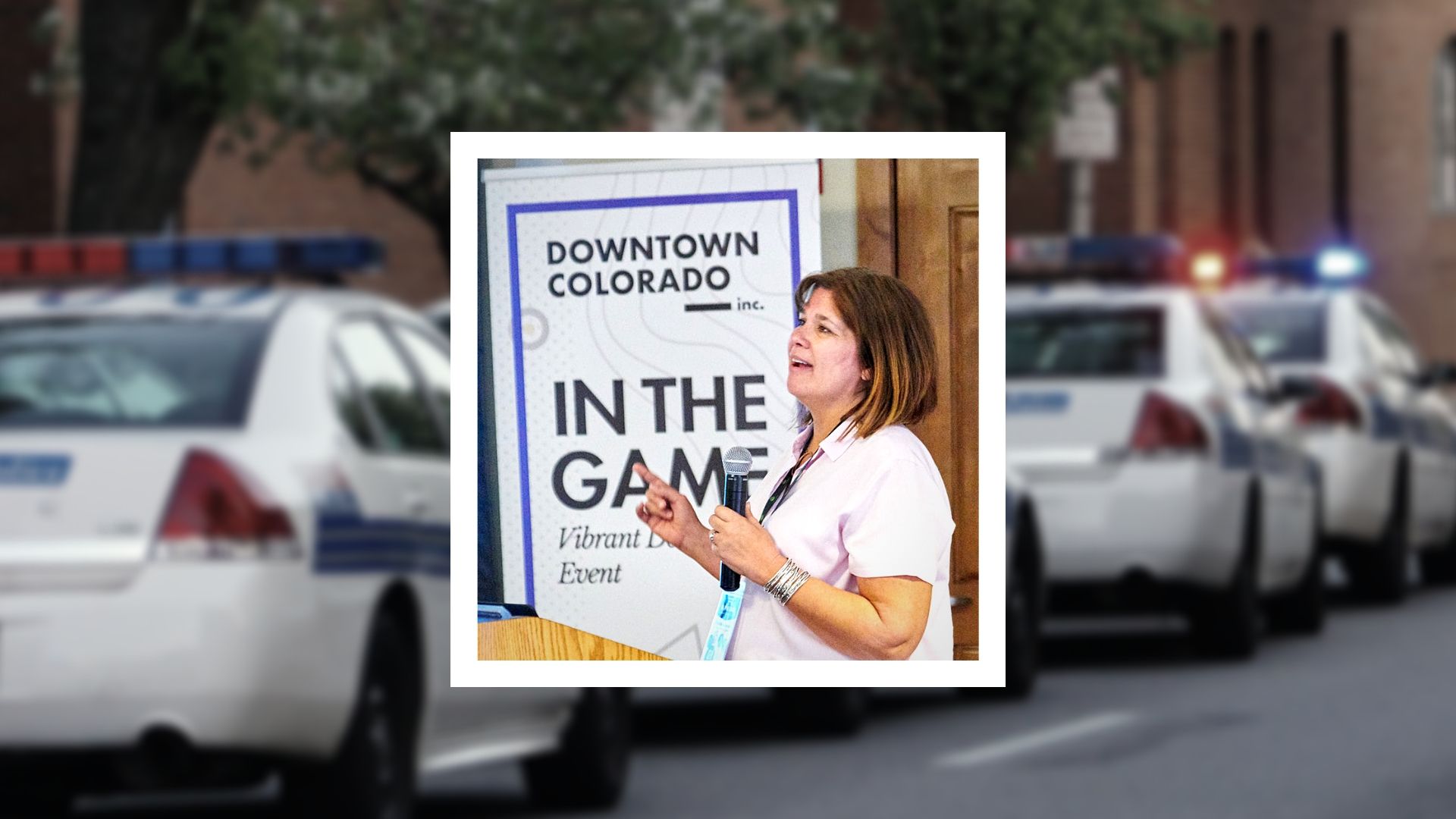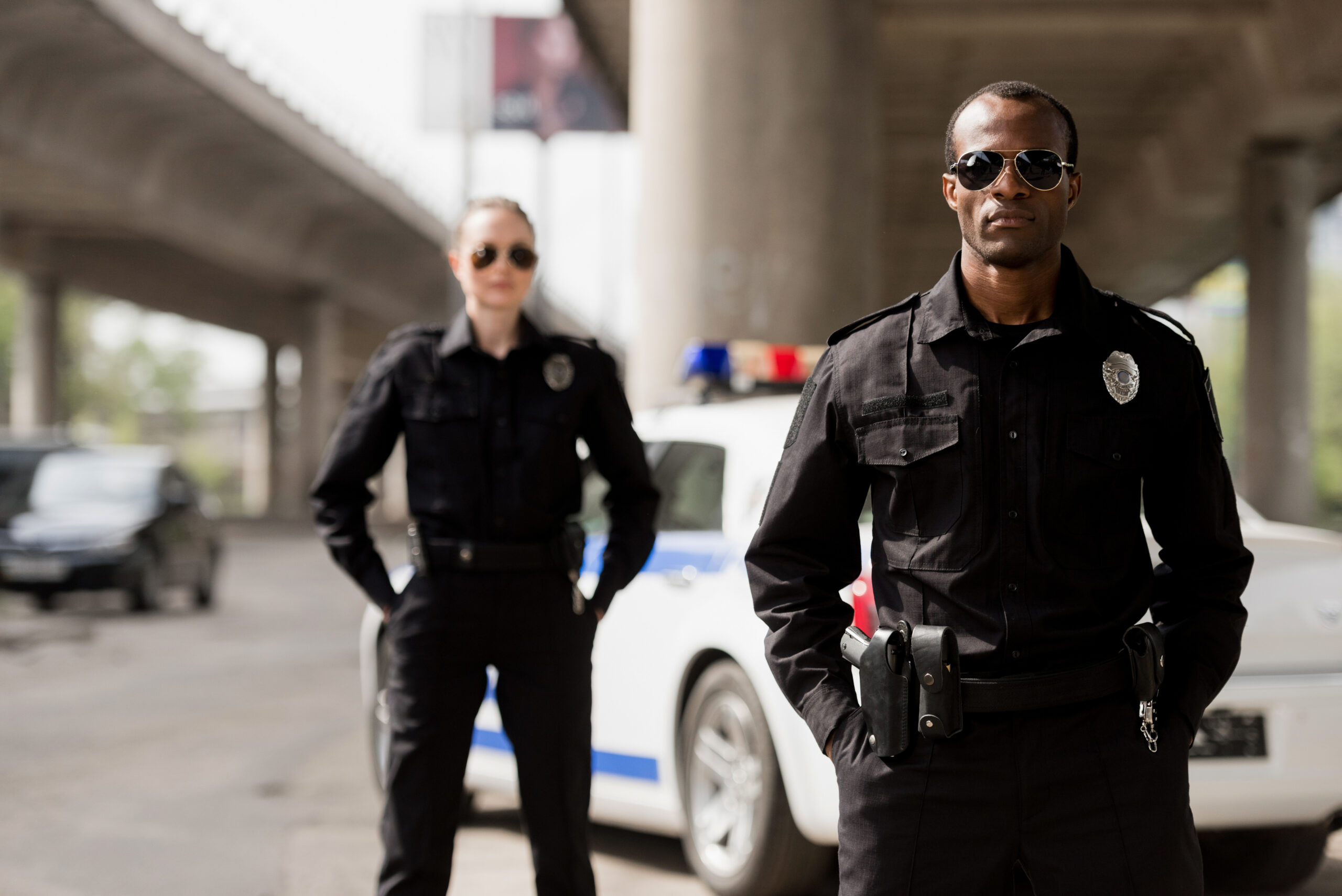Building a Stronger Police Force With Help From Your Residents
By Polco on May 27, 2022

Law enforcement is in an unprecedented position with more responsibilities—like mental health care and more active shooter scenarios—yet less community trust and strained staffing levels. On the bright side, public confidence and other measurements of law enforcement are on the rebound.

The National Law Enforcement Survey (The NLES) collects law enforcement insights from communities across the country that measure public sentiment toward police and sheriff services. Since 2018, data points have fluctuated substantially due to the pandemic and the death of George Floyd.
In this webinar, Polco researcher and Vice President of Innovation Michelle Kobayashi discusses the most recent national data from The NLES compared to 2018 and 2020 results. Police Chief Ken Clary from Bellevue, Nebraska, speaks about his three decades of experience in the field and the value of evidence-based policing.
 Kobayashi then explains the recent results from The National Employee Survey for Law Enforcement (The NES-LE), which examines how officers, sheriffs, and other staff feel about their jobs. Kobayashi ties results into the police retention and recruitment issues law enforcement is dealing with today. Chief Clary discusses how his department was able to retain employees, making Bellevue the only fully-staffed law enforcement agency in Nebraska.
Kobayashi then explains the recent results from The National Employee Survey for Law Enforcement (The NES-LE), which examines how officers, sheriffs, and other staff feel about their jobs. Kobayashi ties results into the police retention and recruitment issues law enforcement is dealing with today. Chief Clary discusses how his department was able to retain employees, making Bellevue the only fully-staffed law enforcement agency in Nebraska.
National Research Center survey scientists created The NLES in 2016 when they noticed police trends were changing.
"Twenty years ago, when I would go give talks, I would say all residents love fire, trash, libraries, and police,” Kobayashi said. “We started noticing in the last decade that’s not true for every community.”
Safety Changes
One of the central questions on The NLES is “How safe do you feel in your community?” Results dropped from 73% positive in 2020 to 68% in 2022. While feelings of safety have continued to change, resident priorities have mostly stayed the same. Concerns like drug abuse, domestic violence, and traffic violations remain top issues.
Residents were less satisfied with 17 areas of safety, like gun violence, DUIs, and disorderly conduct, in 2022 than in 2020. Kobayashi suggests that because everyone was staying home during the height of Covid there was less opportunity for crime. Being stuck indoors may be why people have felt safer in 2020 amid pandemic fears. 
The overall quality of services has slightly improved after a large drop in 2020. The lowest rated services are mostly relationship-based, such as working with people in the neighborhood and inviting community members to provide input.
Trust in Police
Survey results show about half of respondents interacted with the police either casually or reported a concern. Positive feelings toward those interactions increased from 56% to 68% from 2020 to 2022.
The data shows that older white males with single-family homes and a higher income are more satisfied with the police. Levels of trust, especially among Black residents, remain concerning post-2022. Most data points have not improved at all.
“Even though we may have made some traction, we are starting to heal some relationships, and we are starting to work together and be more collaborative, there is still a lot of work to be done with the Black community,” Kobayashi said. “It’s important for agencies to know this so they can start to do the right work with these populations who have traditionally not been at the table when it comes to decision making.”
The Value of Communication
Chief Clary said that engaging residents is essential in building connections, and survey tools are part of that process.
 “There are a lot of studies that show that our citizens are our best eyes and ears,” Clary said. “That’s where a lot of our tips come from as far as where crimes are occurring. They are the people that help us clear crimes, so there has to be trust built with our citizens.”
“There are a lot of studies that show that our citizens are our best eyes and ears,” Clary said. “That’s where a lot of our tips come from as far as where crimes are occurring. They are the people that help us clear crimes, so there has to be trust built with our citizens.”
Clary pointed out the need to address community complaints, whether those complaints are true or misconceptions. If the resident concerns are misunderstandings, Clary said the department needs to do a better job of informing residents of the department's work. .jpg?width=960&name=Law%20Enforcement%20Webinar%20May%202022%20(1).jpg)
Shifting Police Services
“Law enforcement is constantly evolving, like many things in society,” Clary said. He said in the early-90s, police focus was on the war on drugs and gang violence. According to Clary, the rise of recreational cannabis use nationwide has created new challenges like road safety. Law enforcement is also seeing an influx of fentanyl and opiate use.
“We are becoming caretakers of our population. There is an expectation that we are delivering services that an ambulance service would do 5 to 10 years ago," he said. “We are becoming first responders in a medical sense.”
He mentioned the increase in active armed shooters as well, referencing the Uvalde, Texas, shooting.
"We have to be caretakers and guardians,” he said. 
How Officers View Their Jobs
The NES-LE revealed that only 5 in 10 law enforcement employees are satisfied with the compensation, 4 in 10 are satisfied with performance with compensation, and 6 in 10 feel positive about work-life balance. Confidence in leadership is around 70%, which is in line with government employee satisfaction. But 60% percent feel confident in elected officials.
While most people feel positive about receiving respect and equal treatment among the staff, fewer people, 6 in 10, feel positive about police force diversity.
The NES-LE data show that fewer law enforcement employees are interested in long-term career paths in policing than other government employees. On a positive note, more employees rate their agencies higher in protecting them from health and safety hazards, communicating information, effective meetings, employee development, managing low-performing employees, and more.
Police Retention and Recruitment
Chief Clary said that 30 years ago, there were 100 officers for every officer hired. That number continues to decrease to this day.
A few years ago, he noticed the trend and dedicated the time and resources toward retention and recruitment. The effort is part of the reason Bellevue is the only agency in Nebraska at full capacity.
“When we look at policing, we have to look at the whole of society. There are tons of studies since the 70s that said a diverse workforce serves the community better,” he said. “People are more open to a police officer that looks and sounds like them, that comes from a similar background, so we have to be more diligent in our recruiting efforts crossing all lines— being inclusive to all people.”
Clary’s department was the first to sign on to the 30 by 30 initiative to increase women in policing to 30 percent in academies by 2030. “Key to that is people within law enforcement to go out and deliver the message that resonates with the populations that we are attempting to recruit,” he said.
Giving up power is part of it, Clary said. Empowering people of color and women to tell their stories would be beneficial in recruiting more diverse people. It’s inviting people to be part of the solution, he said.
“Studies show women communicate better. They have a better ability to talk people down—to de-escalate a situation. Women law enforcement officers have fewer uses of force,” he said. “There are just a number of things that lend women to being better police officers, but often they don’t see themselves in those roles.” 
Q & A
Edited for clarity and length.
What do you think should be done about police involvement in homelessness? Do you engage social workers?
Clary: Unfortunately, due to a lack of resources in mental health, oftentimes, homelessness is the end result, not the underlying issue these people are facing. The resources are not readily available, so it becomes a policing problem. We do have social workers as part of the ASAAP (alcohol and substance abuse) program…
Unfortunately, sometimes police have to take it upon themselves and try to figure it out. It’s an ongoing problem. It’s not going to get any better. It’s being put on hospitals and police, and we are not set up to handle those issues. We do the best we can do.
Kobayashi: I’ve worked in communities where the homelessness issue is not very well decided at a policy level, and it puts the cops in a very interesting position. If the council hasn’t decided how they want to deal with homelessness, then residents are calling police to enforce laws, sometimes these police officers feel stuck in a bind between enforcing the council’s will, the residents' will, and understanding what their role is.
Will the new 988 mental health crisis number strain police more or offer relief?
Clary: Domestic calls, which primarily are mental health calls, are our number one calls for services. This will just be a different pathway for that. If they call the 988 health crisis number, will that immediately go to the police, or will they actually be offered more resources first? If there is an alternative pathway besides immediately calling us, it could be helpful. Time will tell.
What are the best strategies you use for hard-to-reach populations?
Clary: Often, we claim we have open-door policies. If we simply leave the door open, no one will ever come. The police department can be seen as a scary place, especially by disenfranchised populations who believe we are targeting them. They are never going to come to us, so we have to effectively find a way to go to them whether it be a church, social group, or being in their communities on foot patrol. The onus is on us to bridge that communication gap.
Kobayashi: It’s not for me as a white person to reach out to young people or people of color, but really to go talk to the folks and find out from them how you want to interact. It’s really being open that we on our own don't know the best practices. And it’s making sure the people you’ve invited to the decision-making table feel heard.
Can you tell us more about the value of using data for long-term use?
Kobayashi: One of the messages of the 21st century is we need to communicate and collaborate. We now have new ways to collaborate to make sure it’s not so burdensome. Making people feel heard, being more collaborative, and crowdsourcing ideas, that’s the best way to make decisions. And we need to be accountable and measure it.
What are the demographics of the law enforcement officers who responded to your survey?
Kobayashi: The first set of data is from residents from across the nation and is representative of rural and urban parts of the country. When the criteria didn't match exactly for a national sample, we weighted the data of folks who did respond. For the NES-LE, it’s about 40 organizations, and they vary in terms of size. We don’t have a lot of huge law enforcement agencies who have completed the survey.
What are your thoughts on why the community may not trust the police force?
Matt Fulton, host: Many times, people don’t have a context around issues. The whole benefit of doing engagement is to help people get context around the value that local government provides them. The lack of trust in my mind is there is not a strong enough connection between communities and the services they deliver.
Related Articles
Popular posts
Sign-up for Updates
You May Also Like
These Related Stories

Police Study Report: Opinions of Law Enforcement Differ Between Races

Survey: Community Policing Services Highly Rated Across the US

